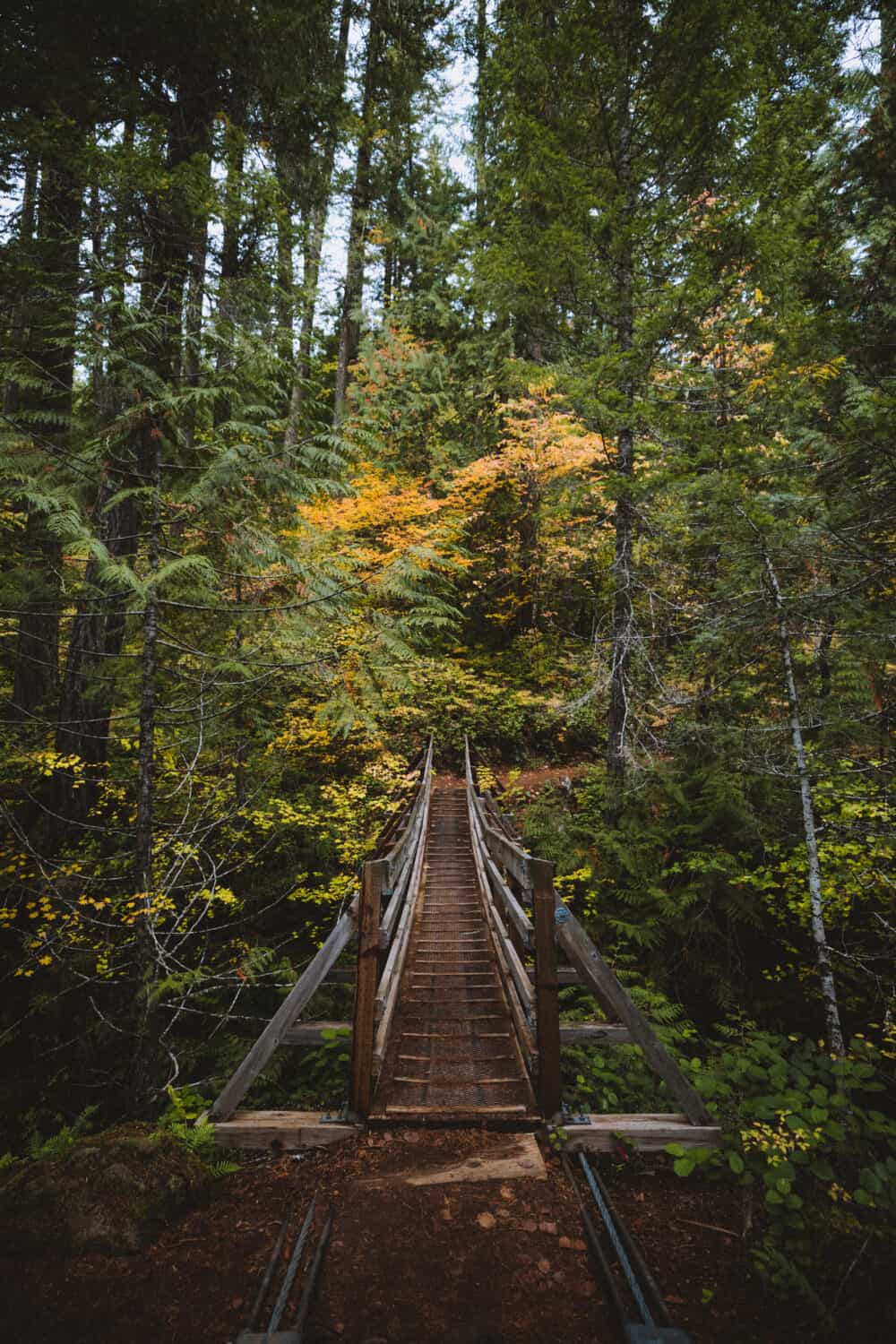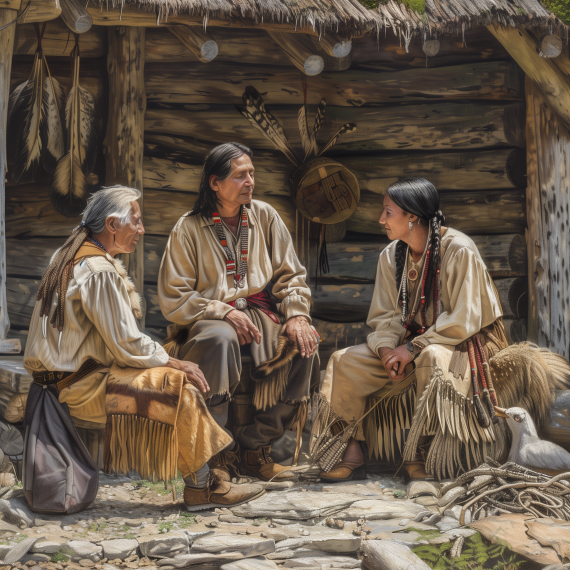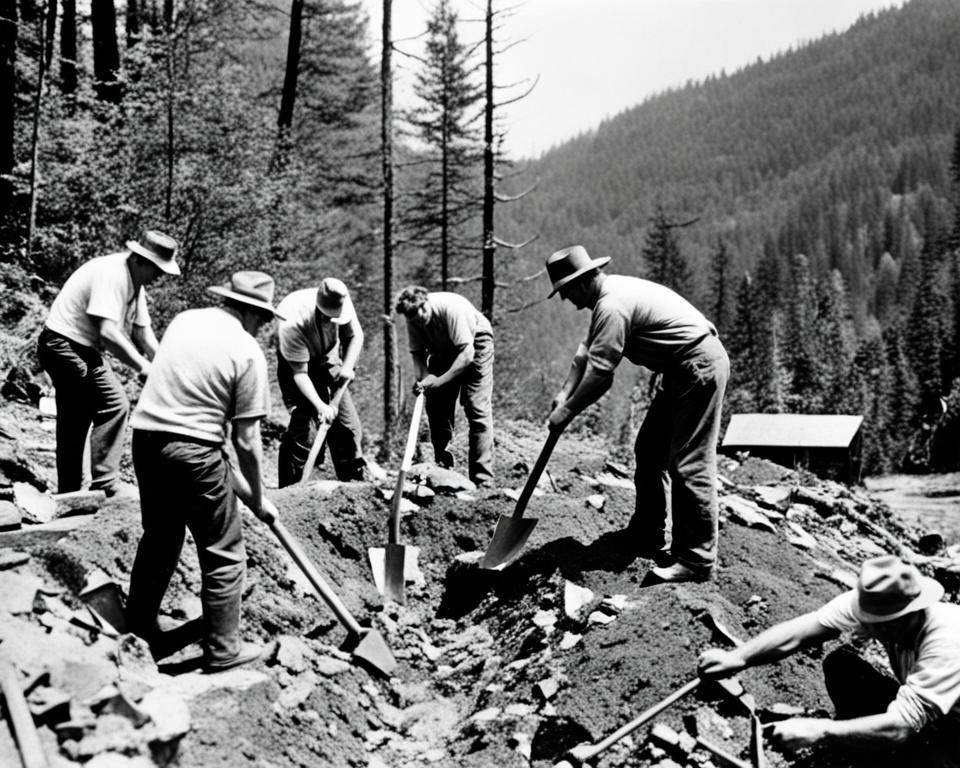
Fall Creek Falls State Park in Tennessee is not only a natural wonder renowned for its beauty and recreational activities, but it also has a rich history and culture that is worth experiencing. From its early Native American roots and pioneer settlement to the Great Depression and the Civilian Conservation Corps, Fall Creek Falls has a fascinating story to tell.
Visitors can explore the park’s notable landmarks and points of interest, immerse themselves in cultural events and festivals, and learn about the environmental conservation efforts undertaken to protect its natural ecosystems. In this article, we will take a dive into the history and culture surrounding Fall Creek Falls State Park and its significance in Tennessee’s nature.
Before Fall Creek Falls State Park became the beloved natural attraction it is today, it was home to various indigenous tribes. The Cherokee, Shawnee, and Chickasaw were among the early inhabitants who lived in and around the park area.
The Native American tribes had a deep connection to the land, which they viewed as sacred. They recognized the value of the park’s natural resources and used them for their sustenance and medicinal purposes. The tribes also had a rich cultural heritage, which included storytelling, music, and art.

As European settlers began to explore and settle the region, they forced many Native Americans off their lands. Today, the park pays homage to the early inhabitants, and visitors can learn about their historical and cultural significance through various educational programs and exhibits.
| Tribe | Location | Significance |
|---|---|---|
| Cherokee | Eastern Tennessee, Northern Georgia, Western North Carolina | Largest tribe in the region; forced to relocate along the Trail of Tears |
| Shawnee | Ohio Valley | Skilled hunters and fighters; traded with other tribes and Europeans |
| Chickasaw | Mississippi, Tennessee, and Kentucky | Known for their agricultural and military prowess; fought alongside Andrew Jackson’s army in the Battle of New Orleans |
Visitors can appreciate the significance of Native American culture through the many artifacts and exhibits displayed at the park’s nature center. Additionally, the park celebrates the rich cultural heritage of the indigenous tribes with an annual Native American Heritage festival, which showcases their customs and traditions.
The history of Fall Creek Falls State Park dates back to the pioneer settlement era, where brave individuals ventured into the wilderness to make a new home. These settlers faced many challenges, such as harsh weather conditions, dangerous animals, and the lack of vital resources. Nevertheless, their adventurous spirit and determination allowed them to establish settlements in the region, laying the foundation for future exploration.
Many of these pioneers were attracted to the area due to its abundance of natural resources, including timber, minerals, and fertile land. These resources enabled the pioneers to establish thriving communities and support the growing economy. Over time, the exploration and settlement of the region led to the development of essential infrastructure, such as roads, bridges, and schools.
Despite the hardships faced by the early settlers, their stories of exploration and survival continue to evoke a sense of admiration and wonder. Many historical landmarks and sites within Fall Creek Falls State Park pay tribute to these pioneers and their contributions to the region’s rich history.
The first settlers of the area now known as Fall Creek Falls State Park were primarily European Americans who arrived during the late 1700s and early 1800s. These pioneers were attracted to the region’s abundant wildlife, fertile land, and natural resources, which offered opportunities for farming, trapping, and mining.
One of the earliest recorded settlements in the area was Hamilton County, established in 1819 by John Ross and his family. The Ross family, along with other pioneer settlers, made significant contributions to the economic and cultural development of the region, including the establishment of churches, schools, and trade centers.
The exploration of the area around Fall Creek Falls State Park began in earnest during the mid-1800s when geologists and naturalists began to explore the region’s geological features and diverse flora and fauna. These scientific expeditions contributed greatly to our understanding of the region’s natural resources and its potential for economic development.
At the turn of the 20th century, the establishment of the railroads opened up new opportunities for exploration and settlement. Many homesteaders and entrepreneurs came to the region, drawn by its potential for logging, agriculture, and tourism. By the 1920s, the area had become a popular destination for outdoor recreation, attracting visitors from all over the region.
| Pioneer Settlers | Exploration of the Area |
|---|---|
| European Americans | Geologists and naturalists |
| John Ross and family | Railroad establishment |
| Establishment of churches, schools, and trade centers | Homesteaders and entrepreneurs |
| Logging, agriculture, and tourism | Popularity for outdoor recreation |
The pioneer settlement and exploration of Fall Creek Falls State Park are fascinating stories of human resilience, endurance, and adaptability. Without the efforts of these brave individuals, we would not have the rich history and cultural heritage that we treasure today.
Explore the evolution of Fall Creek Falls State Park from a modest recreational area to a beloved natural attraction. In the early 1930s, the Civilian Conservation Corps (CCC) and Works Progress Administration (WPA) were instrumental in developing the park, constructing hiking trails, cabins, campgrounds, and picnic areas. Today, the park spans over 29,000 acres and is known for its stunning waterfalls, diverse wildlife, and outdoor recreational opportunities.
The park’s development hasn’t come without challenges, however. Rapid growth and rising visitor numbers have led to increased concern about preservation and conservation efforts. Fortunately, the park’s administration has prioritized eco-friendly strategies to ensure the park remains a natural treasure for generations to come. Efforts include reducing waste, promoting sustainable tourism, and educating visitors about environmental conservation.

Fall Creek Falls State Park has come a long way since its early beginnings. We remain committed to preserving its natural beauty. We strive to balance providing access to visitors while protecting our delicate ecosystem.
Preserving the park’s natural beauty is a priority. The park has restored key land and hiking trails in recent years, enhancing visitors’ wilderness experience. Enjoy hiking, fishing, camping, and cabin-stays against a backdrop of beautiful waterfalls, gorges, and natural habitats.
The park’s administration invests in sustainable development to minimize environmental impact. Measures include installing recycling bins, offering educational programs focused on conservation, and conserving water and energy through low-flow faucets and LED lighting.
Development of Fall Creek Falls State Park is an ongoing journey. While the park is a fantastic destination for experiencing Tennessee’s natural beauty, it also stands as a model of environmental conservation and sustainable development.
The Great Depression hit the United States hard, and Tennessee was no exception. The federal government established the Civilian Conservation Corps (CCC) to provide employment opportunities for young men during this time.
As part of President Franklin D. Roosevelt’s New Deal programs, the CCC played a crucial role in the development of Fall Creek Falls State Park. From 1933 to 1942, the CCC built trails, roads, buildings, and other facilities at the park. They preserved the region’s natural beauty while providing jobs.
Today, the CCC’s influence is still visible throughout the park. Visitors can appreciate the lasting legacy of their work and its impact on the park’s development and the lives of the young men who participated in the program.
The CCC provided necessary employment opportunities during a time of crisis and showed the value of preserving natural spaces like Fall Creek Falls State Park. Without their efforts, the park may not be what it is today.
Fall Creek Falls State Park is a haven for any nature enthusiast. It offers a vast range of recreational activities, from the active to the relaxed visitor. Experience stunning wildlife by taking scenic hikes or trails available to explore the park’s vivid beauty. With 256 campsites, you can spend the night in one of the campgrounds, from primitive to RV sites. You’ll find them accessible by both tents and vehicles.
The park offers amenities to hire equipment such as kayaks and canoes and provides various camping and picnic sites. With plenty of parking spaces, visitors can explore the park at their leisure.
Experience the vibrant culture of Fall Creek Falls State Park by attending one of the many cultural events and festivals held throughout the year. From traditional music and dance performances to art exhibitions and craft fairs, there’s something for everyone to enjoy.
| Event | Date | Description |
|---|---|---|
| Bluegrass Underground | Various Dates | Experience live performances in an underground cave with stunning acoustics. |
| Heritage Day Festival | September | Celebrate Tennessee’s heritage with local food, crafts, and music. |
| Fiddle and Jamboree Contest | June | Watch or participate in a traditional music contest celebrating cultural roots. |
| Wildflower Pilgrimage | April | Join educational hikes showcasing the park’s scenic flora and fauna. |
These events and festivals offer a unique opportunity to appreciate the history and heritage of Fall Creek Falls State Park while enjoying fun activities with family and friends.
Visitors to Fall Creek Falls State Park will be amazed by the stunning landmarks and points of interest surrounding them. The park’s stunning waterfalls, including the powerful and majestic Fall Creek Falls standing over 250 feet tall, are a must-see. Other must-see waterfalls include Piney Falls and Cane Creek Falls, each with unique appeal and beauty.
The park boasts various scenic overlooks that provide breathtaking views of the forest and valleys. The Coon Creek Loop Trail leads hikers through a dense forest, arriving at a scenic overlook above the eastern edge of the park.
For history enthusiasts, the park’s Cable Mill Area features a preserved grist mill and homestead that provide an interactive look at pioneer life in early Tennessee. You can also visit the nearby homestead of renowned writer and historian John R. Spears.
The park’s extensive trail system offers a range of hiking options, leading visitors to hidden gems such as the Caney Creek Gorge and its narrow canyons.
Fall Creek Falls State Park is committed to providing an enjoyable experience while protecting its natural ecosystems. The park implements various conservation efforts to ensure its beauty and greenery remain intact.
The park employs a team of biologists and naturalists who work to preserve the natural ecosystem. They monitor plant populations and develop strategies for preserving and enhancing biodiversity. Endangered or threatened species receive special attention, and their habitats are protected.
Park management closely monitors the quality of water and air. Regular water sampling checks for pollutants and chemical changes. To prevent air pollution, the park has no-smoking policies and limits motorized vehicles in areas where air quality can be impacted.
The park has strict laws and regulations to manage hazardous waste. Materials such as cleaning products, motor oil, and fertilizers are stored and used according to strict standards to prevent leakage or contamination.
From preserving natural diversity to monitoring the quality of air and water, Fall Creek Falls State Park management is dedicated to preserving the beauty of Tennessee’s nature. By implementing eco-friendly practices, the park seeks to mitigate its ecological footprint and preserve natural resources for future generations.
Fall Creek Falls State Park is not only a marvel of natural beauty but also a window into Tennessee’s history. The park’s historical significance is deeply rooted in the lives of Native Americans and early settlers.
Thanks to the Tennessee State Parks Department’s efforts, the historical and cultural significance of the park has been well-maintained. Preservation of historic structures and artifacts allows visitors to understand and appreciate the area’s past.
| Preservation Efforts | Conservation Efforts |
|---|---|
| Repair and restoration of historic buildings | Protecting natural habitats and ecosystems |
| Hosting educational programs and events | Promoting responsible tourism and outdoor activities |
| Preserving cultural and artistic traditions | Enforcing park regulations to prevent damage and littering |
By working to preserve the historical significance of Fall Creek Falls State Park, we ensure that future generations can experience both the majesty of nature and the rich cultural heritage woven into this Tennessee landmark.
Fall Creek Falls State Park significantly impacts the surrounding communities. The park draws numerous tourists from around the world, boosting the local economy through tourism. Numerous hotels, restaurants, and souvenir shops thrive around its vicinity.
The park provides a vital link to the area’s past, with its historical significance inspiring pride among locals and visitors. Its distinctive culture, showcased through events and festivals, further cements the park’s place in the local community. Fall Creek Falls State Park is also a valuable resource for educational institutions, offering learning opportunities in biological and environmental fields.
| Type | Cultural Impact |
|---|---|
| Economic | Provides jobs, boosts economy through tourism, attracts investments, and creates business activities. |
| Social | Serves as a community gathering place, offering social activities and cultural events. |
| Educational | Provides learning opportunities in nature, geology, botany, and zoology, attracting educational visitors. |
Fall Creek Falls State Park is a unique reflection of Tennessee’s history and culture. From its Native American roots to the pioneers who settled here, the park has a rich legacy worth preserving. The impact of the Great Depression and the CCC in developing the park will be felt for generations. Today, visitors enjoy a wide range of recreational activities and cultural events while experiencing the park’s natural beauty and conservation efforts. The park’s significance extends beyond its borders, enriching surrounding communities and contributing to their growth. Fall Creek Falls State Park is a true heritage site, and its preservation is vital for future generations.
Fall Creek Falls State Park has a rich history that dates back to the Native American tribes who first inhabited the area. It later saw pioneer settlement and exploration before becoming a beloved natural attraction.
You can explore the Native American roots of Fall Creek Falls by visiting the park’s interpretive center and participating in guided tours. These experiences provide insights into the indigenous tribes and their connection to the land.
The pioneer settlement era at Fall Creek Falls State Park is filled with fascinating stories of brave individuals who ventured into the wilderness. You can learn about their exploration and how they established settlements in the region.
Fall Creek Falls State Park has gone through significant development since its early beginnings. Discover how it evolved into the beloved natural attraction it is today and the efforts made to preserve its natural beauty.
The Great Depression had a profound impact on Fall Creek Falls. During this time, the Civilian Conservation Corps (CCC) was instrumental in developing the park and leaving a lasting legacy of their work.
Fall Creek Falls State Park offers a wide range of recreational activities for visitors. You can enjoy hiking, camping, fishing, wildlife viewing, and more. There’s something for everyone to enjoy.
Yes, Fall Creek Falls State Park hosts various cultural events and festivals throughout the year. These events celebrate the unique heritage of the region and showcase traditions, music, and art.
Fall Creek Falls State Park is home to several notable landmarks and points of interest. From the breathtaking waterfalls to scenic overlooks, there are plenty of sights to discover and explore.
Fall Creek Falls State Park is committed to environmental conservation. Learn about the park’s efforts to preserve its natural ecosystems, protect the flora and fauna, and maintain the beauty of the park.
Fall Creek Falls State Park recognizes the historical significance of its structures and artifacts. Ongoing efforts are made to preserve these historical elements for future generations to appreciate and learn from.
Fall Creek Falls State Park has a significant cultural impact on the surrounding communities. It contributes to the local economy, brings social benefits, and provides educational opportunities for residents and visitors alike.